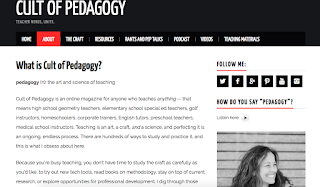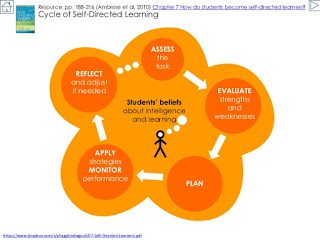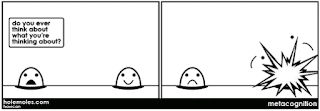Pedagogy and Assessment
Mission:
To provide samples of pedagogy and assessment tools utilized by faculty members.
University 101
Center for Excellence in Teaching and Learning
Student Development Theory
Socratic Method and Essay Exams
Top 4 Effective Strategies Identified by Faculty
Comprehension Cards
Faculty provided students with color coded cards and asked them to select a card that reflected their grasp on the concept being taught. Red represented confusion, yellow demonstrated a degree of confusion, while green signified little to no confusion.
Think-Pair-Share
After content is presented by faculty, ask students to reflect on the topic. Then, ask students to turn to a partner to share their thoughts and perspectives of the topic at hand.
PMI-Q
Based on the content presented, students acknowledge two positives, two negatives, two interesting concepts, and two questions. Then, they share their thoughts and perspectives.
Punctuated Lecture
Faculty present a short lecture, perhaps around fifteen minutes. From the lecture, ask students to write a one minute summary. Then, faculty then presents another short lecture. Finally, ask students to think, pair, and share their thoughts.
While we teach, we learn.
Shippensburg University's Center for Excellence in Teaching and Learning is a professional development community of faculty fellows dedicated to supporting SU faculty as they strive to empower learners. Faculty fellows provide trainings, conferences, speaking events, workshops, and/or retreats for all faculty and point-in-time professional development (PD) for departments, programs and individuals. This blog showcases pedagogical frameworks and processes for engaging 21st century learners.
Teaching students to think like experts requires
explicit and systematic language structures. It requires purposeful teacher talk and demonstrations so that learners can observe and acquire not only understanding, but also schematic processes for retaining and recalling information. We shape learners by shaping the way they access information. Most often, we lecture content information and speak to students, but the most effective educators realize that learning requires metacognitive rehearsals. Metacognition can be defined
as awareness of one's thoughts, thinking about thinking, and reflection while learning. In order to guide students, professors must plan the path toward understanding. When making decisions about specific information to present in a lecture or assignment, also consider strategic rehearsal to structure the learning process and ultimately the outcomes.
Here are a three recommendations for using rehearsal strategies during lectures:
Building Language to Build Understanding: Share information visually, perhaps using a power point, but instead of having student zone out while copying the information, ask them to read the power point silently first. Then, ask them to
identify important information in the content and list that information in their notes. Ask them to share quickly that information with a peer. Then, lecture briefly to explain the information. Finally, ask them to summarize orally or in their notes the concept.
Benefits of this Method: College students have spent years thinking they know how to learn, but in reality they know how to copy notes from visual displays. In order to have them think about a concept rather than copying a concept, break up the visual information with a rehearsal task to begin to build specific and relevant concepts (main ideas and details) through explicit and important language terms.
Vocabulary acquisition is the first step in learning to think and speak like an expert.
Building Shared Understanding Using Peers Perspectives: I
triangulate understanding during a lecture or presentation. I am a researcher at heart and I know that I must gather data and assess its impact. During a lecture I routinely take breaks to ask:
What did you hear me say? I look for students at different levels of achievement, below, on and above benchmark. I ask each of them to recall the content. In this way, I am gaining two pieces of information, how do different levels of students understand the information, and how can I help students recognize what their peers know. As educators, we know that
students learn from each other, and in this approach, that explicit shared understanding is immediate and does not require a separate lesson or presentation.
Benefits of this Method: Building Shared Understanding has been so successful in my classroom that students have begun to use it during their presentations. They recognize that engagement in a concept is a significant factor in gaining understanding.
Interaction with the content from more than one perspective is one way to think deeply.
Building Memory of Learning Experience: I like to call this:
What did you see me do? In another approach to fostering understanding, I often model a task
with no language (yes, no talking, just doing).
I use a visual tool, like the Elmo, to project the materials as I share the step-by-step process. Students simply observe. After demonstrating one part of the overall task, I ask students to describe my process. In this way, they are relying on their visual memory to build their language understanding. I ask them to write out the steps as they observed. I also ask them to summarize in their notes the experience.
Benefits of this Method: Building a memory of a learning experience has been so successful, that I have started to ask on exams how students remember information and they often report specific classroom lessons. I also remind students that Building a Memory is a way to provide an example of an expectation. This prompts them to think about course evaluations in which they rate my use of examples. Too often students think examples must be their peers' work, but who better than you the expert to share the example.
Explicitness in your actions is one way to show your expertise so that students can replicate expert thoughts and actions.
There are a number of factors that shape a pedagogical perspective. Professors are researchers, educators, and ultimately
pedagogical philosophers who test their teaching and learning theories in and out of the classroom. We rely on experts to guide our academic choices, our methods for enhancing instructional practices and learning outcomes. We find what works and reuse those techniques, but the truly innovative educator is always exploring and searching for new approaches. Yet, the reality of finding time to investigate and implement new methods often takes a back seat to other faculty responsibilities.
Here is an idea to help balance the need to be a highly effective educator with the time it takes to adapt instructional initiatives.
Follow at least one blog relating to effective teaching in higher education. Become inspired by peers who are investigating options for engaging learners, for assessing content in meaningful ways, and for inspiring students to be life long learners. Consider adding some or all of these links daily, weekly, or monthly viewing.
Above all, consider adding to the discussion with comments or posts. 



Critical Thinking Strategies for Student Engagement
AKA: How to use visual tools in an interacting and engaging way!
Directory of Strategies
Using Emaze, Powtoon, (Power Point):
- Word Splash
- Think Pair Share
- Focused Listening
- Note Share
- Kahoot
- ReQuest
- Modified KWL
- Lino
- Pass the Paper
- Take a Guess
- Fishbowl
Word Splash (brainstorming, rehearsing key ideas, rehearsing steps)
– to rehearsal strategies that require students to think about, recall, and reflect on both the content and how that connects to skills and tasks.
–to use teacher talk the describes expectations while showing students those expectations, specifically while using rubrics or checklists.
– to use teacher talk (think aloud) that describes metacognitive processes associated with content knowledge connections, skills or a task.
– connect prior knowledge to new knowledge.
– Create a list or a word web of terms to describe a typical class.
–Code the Text: Underline (or circle) the key terms that describe the essence of your pedagogy.
Three Critical Listening Strategies
(Think/Pair/Share, Focused Listening, Note Share)
Interactive Notebooks and Graphic Organizers
Fold paper into three sections and note the name of the strategy at the top and details about that strategy below.
Think-Pair-Share (cognitive rehearsal and oral integration of content)
– to reinforce or recall details at intervals in a lecture, video, or short discussion,
– OR to assess background knowledge prior to teaching a concept.
– Lecture/share information about a concept, key term(s), or process.
– Ask students to recall information shared individually.
–Ask partners to turn and restate information conceptualized from the lecture.
– Ask a small number of students to restate to the whole group concepts shared with a partner to confirm the scope and sequence of the topic, key term(s), or process.
Focused Listening (connecting expectations, scaffolding to determining importance)
–to establish a reason for listening to a lecture, video, or short discussion.
– Explain or list key concepts or topics to listen for during the lecture, video, or short discussion.
– Use questions throughout the lecture to rehearse information. Ask students to write or share ideas/answers.
– After the lecture, video, or short discussion, write a brief summary.
Note Share (cognitive rehearsal and integration of content)
–to review key concepts or terms with peers to reinforce effective note taking.
– Share a lecture, video, or short discussion.
– Ask students to organize and summarize the information in their notes.
– Prior to the end of class, ask students to find a partner and share notebooks.
– Read notes, return notebooks, and write a brief summary of the lecture, video, or short discussion based on the partner’s notes.
– OR code notes with similar connections, ie. Circle items in both partners’ notes, underline different ideas.
Reviewing and Assessing Information: Using Kahoot
Two Critical Questioning Strategies
(Request, Modified KWL, )
Interactive Notebooks and Graphic Organizers
Fold paper into hat, name of the strategy at the top and details about strategy in the flaps.
ReQuest: Questions and Answers (critical thinking: synthesizing, evaluating and summarizing)
–to summarize (through questioning) concepts at various intervals in a lecture, video, or short discussion or while reading a text.
–Share information in a lecture, video or short discussion or while reading a text.
– At intervals in the lecture or reading, ask students to find a partner.
–Have each partner to generate a question based on the discussion or reading.
– Take turns asking and answering each other’s questions.
– Encourage partners to ask multiple level questions: literal, inferential, evaluative, synthesized (text to text, text to self, text to world), or aesthetic questions.
Modified KWL (critical thinking: synthesizing, evaluating and summarizing)
– to activate background knowledge prior to reading to summarize concepts shared.
- Steps: What the Author’s Point, What Questions Do I Have that Match the Author’s Knowledge, What Has the Author Taught Me???
– Use a table format to organize notes.
– Ask students to skim the textbook or article. Ask students to list at least five key features they know about a topic.
–Ask students to write only two questions, one based on content from headings or vocabulary, and one based on the author’s purpose (theme).
– Ask students to read the selection, and then answer the questions.
–Share a few questions and answers in small or large groups.
Reviewing and Assessing information:
Using Lino to Describe of Close Reading
Three Summarizing Strategies to Rehearse Content, Concepts, and Connections
(Pass the Paper, Take a Guess, Fishbowl)
With a group read the slide and select key components in the steps to present the strategy. In a minute, model the steps for the group. The group will guess which strategy was demonstrated.
Pass the Paper (cognitive rehearsal and integration of content for a share understanding)
–to assess students’ background knowledge and shared understanding of a concept or key terms.
–Ask students to use a piece of note paper or an electronic tool, like Evernote.
–Pose a discussion topic based on a lecture or required reading.
–Ask students to write for one minute in either a list, definitions, or descriptions of the topic.
–After one minute, pass the paper to another student and continue writing for one minute either adding additional information or using codes to agree/disagree with information. Code can include circles, stars, underlining.
–At the end of class, use the codes to discuss the topic, either as a whole group or with partners.
Take a Guess (cognitive rehearsal and integration of content for a share understanding)
– to assess students’ background knowledge of a concept or key terms.
– Before the lecture, have students with a partner or small group create a list of three to six important facts about the topic which they think you will discuss in your lecture.
–Post the lists.
– During the lecture, take a few minutes to circle concepts on the list that are shared in the lecture, video, or short discussion.
– At the end of class, use the circled concepts, to generate a summary of the content, either individually or with a partner.
Fishbowl (cognitive rehearsal and integration of content for a share understanding)
– to observe and summarize a short discussion or demonstration.
– With a small group in the center of the classroom, have a discussion or demonstration based on a concept.
– Ask the other students to gather around the small group with notebooks.
– Lecture information or demonstrate a skill.
– During the lecture or demonstration, encourage the small group to ask clarifying questions, plus take notes during the observation.
– Ask the outside group to take notes highlighting their observations of the small group.
– At the end of the discussion or demonstration, ask the outside group to share their observations.
Posted by Lynn Baynum, Ph.D.
Access our blog here:
https://whileweteachwelearn.blogspot.com/







